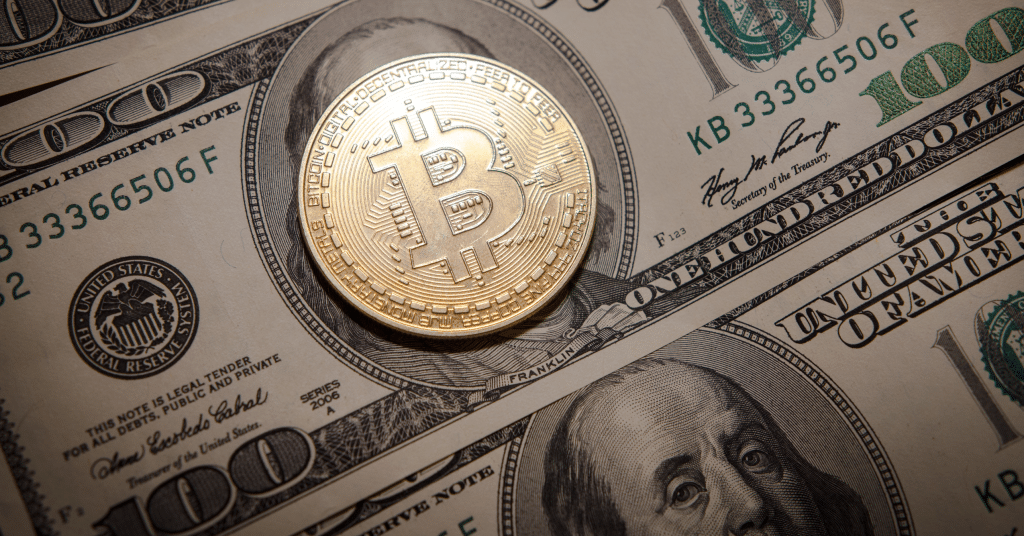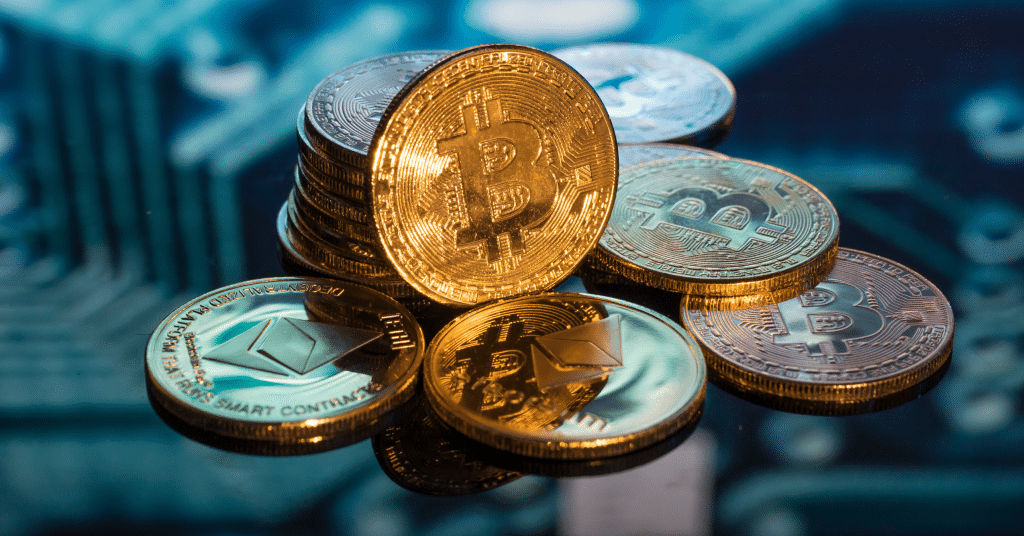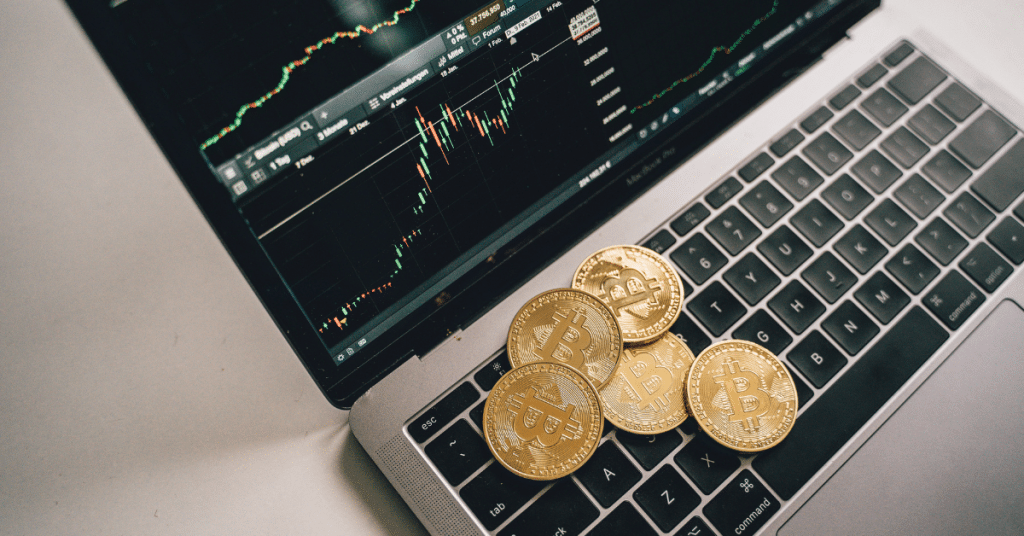The world of cryptocurrency has come a long way since Bitcoin first appeared in 2009. What started as a single digital currency has grown into a vast ecosystem of blockchain networks, each with its own special features and purposes.
At the heart of this digital revolution are Layer 1 blockchains – think of them as the foundation stones of the entire crypto world. These networks don’t just process transactions; they’re the building blocks that make everything else possible.
As we move through 2025, understanding these Layer 1 cryptocurrencies is like having a map to navigate the exciting future of digital money and online innovation.
What are Layer 1 (L1) Blockchains?
Imagine Layer 1 blockchains as the ground floor of a massive digital building. They’re the main networks that handle all the basic but crucial tasks in the crypto world. Unlike apps or services that run on top of other systems, Layer 1 blockchains stand on their own two feet.
Here’s what makes them special:
- They run independently without needing help from other networks
- They have their own rules for how transactions get approved
- They keep everything secure and spread out (decentralized)
- They process and finalize transactions all by themselves
- They have their own native coins that power the whole network
Think of Layer 1 blockchains like the operating system of your computer – they’re the foundation that everything else builds upon. They make sure everyone agrees on what’s happening on the network, keeping track of who owns what and making sure no one can cheat the system.
Top 10 Layer 1 Crypto Tokens and Coins of 2025
The crypto market has evolved tremendously, with Layer 1 blockchains leading the way in bringing new ideas to life. Let’s explore the top 10 Layer 1 cryptocurrencies that are shaping the future of digital finance. We’ve ranked them based on their market presence, technology, and how much activity happens in their ecosystems.
| Rank | Cryptocurrency | Symbol | Market Cap | TVL | Dominance |
|---|---|---|---|---|---|
| 1 | Ethereum | ETH | $220.4B | $52.24B | 60.74% |
| 2 | Bitcoin | BTC | $1,907.7B | $6.08B | 7.07% |
| 3 | Solana | SOL | $76.2B | $7.92B | 9.21% |
| 4 | BNB Chain | BNB | $87.0B | $5.93B | 6.89% |
| 5 | TRON | TRX | $23.5B | $5.07B | 5.90% |
| 6 | Sui | SUI | $11.3B | $1.76B | 2.05% |
| 7 | Avalanche | AVAX | $8.7B | $1.18B | 1.37% |
| 8 | Cardano | ADA | $25.2B | $334M | 0.39% |
| 9 | Berachain | BERA | $393.7M | $2.75B | 3.19% |
| 10 | TON | TON | $7.9B | $133M | 0.15% |
1. Ethereum (ETH)
Think of Ethereum as the Switzerland of crypto – it’s where most of the action happens. Created by Vitalik Buterin, Ethereum didn’t just copy Bitcoin; it added a whole new dimension by introducing “smart contracts” – basically, self-executing agreements that run automatically.

This innovation turned Ethereum into a playground for developers, who have built over 3,000 applications on it. From digital art (NFTs) to decentralized finance (DeFi), if something exciting is happening in crypto, chances are it’s happening on Ethereum. The network recently switched to a more environmentally friendly system, making it both powerful and sustainable.
- Price: $1,825.24
- Market Cap: $220.4 billion
- TVL: $52.24 billion
2. Bitcoin (BTC)
Bitcoin is like the gold standard of cryptocurrency – it’s the original and still the most valuable. While it might not have all the fancy features of newer blockchains, Bitcoin does one thing exceptionally well: it stores value securely. Think of it as digital gold that you can send anywhere in the world.
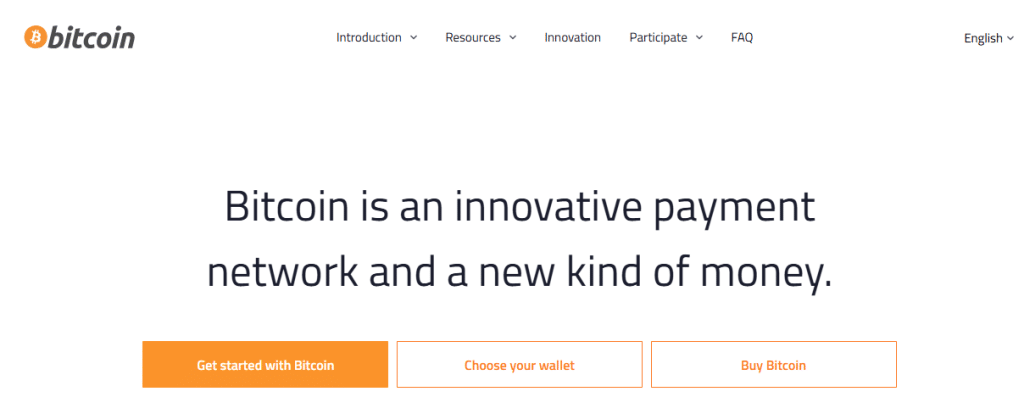
Recently, people have even started creating digital collectibles (NFTs) on Bitcoin, showing that even this grandfather of crypto can learn new tricks. With governments and big companies starting to take it seriously, Bitcoin has cemented its place as the most trusted and most expensive cryptocurrency in the world.
- Price: $96,069.15
- Market Cap: $1,907.7 billion
- TVL: $6.08 billion
3. Solana (SOL)
If Ethereum is Switzerland, Solana is like the Formula 1 track of crypto – it’s all about speed. Solana can process thousands of transactions per second, and it does this so cheaply that you barely notice the fees.
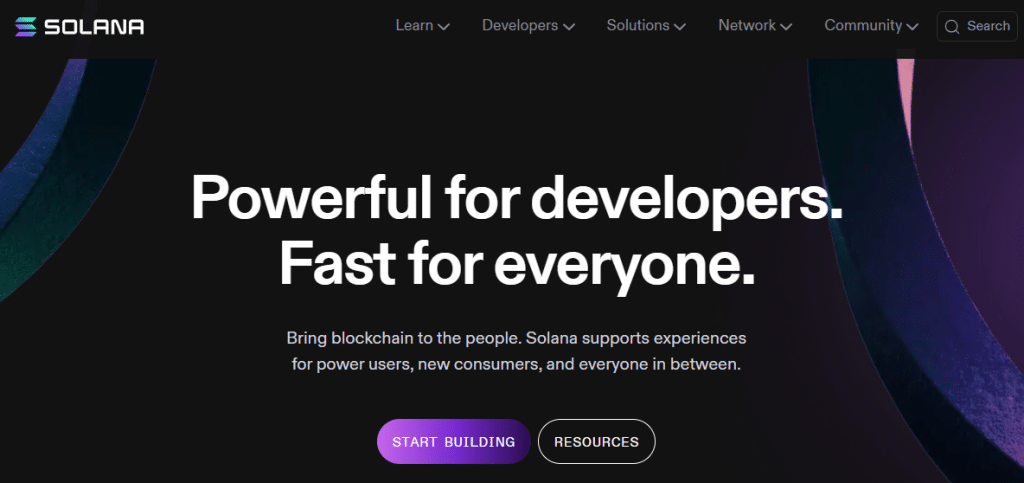
This makes it perfect for things that need to happen fast, like trading or gaming. The team behind Solana has even created a crypto-focused smartphone, showing they’re thinking beyond just blockchain. With major tech companies partnering with them, Solana is quickly becoming a favorite for developers who need speed without breaking the bank.
- Price: $147.17
- Market Cap: $76.2 billion
- TVL: $7.92 billion
4. BNB Chain (BNB)
BNB Chain is like having a fast lane at the world’s biggest crypto exchange, Binance. It’s designed to work similarly to Ethereum but with faster speeds and lower costs. This makes it attractive for developers who want to build applications without their users complaining about high fees.

Being connected to Binance gives BNB Chain a unique advantage – it’s like having a direct highway to one of the busiest trading centers in crypto. Many projects choose BNB Chain because it offers a good balance of speed, cost, and accessibility.
If you’re interested in joining Binance and getting started with BNB Chain, you can use our Binance referral code to benefit from exclusive offers.
- Price: $596.03
- Market Cap: $87.0 billion
- TVL: $5.93 billion
5. TRON (TRX)
TRON has found its sweet spot in the world of stablecoins and entertainment. If you’ve ever sent USDT (a popular stablecoin), there’s a good chance it traveled on the TRON network. Why? Because TRON makes these transfers fast and almost free.

Originally focused on content sharing and entertainment, TRON has evolved into a practical network for everyday crypto transactions. It’s like the utility player in sports – not always flashy, but incredibly useful and reliable when you need it.
- Price: $0.2479
- Market Cap: $23.5 billion
- TVL: $5.07 billion
6. Sui (SUI)
Sui is one of the new kids on the blockchain, built by some former Facebook (Meta) employees who wanted to create something better. They focused on making blockchain technology easier to use – imagine if using crypto was as simple as using your favorite app.

Sui uses some clever technology to process many transactions at once, making it super efficient. Despite being relatively new, it’s already attracting attention from developers who appreciate its modern approach to solving old blockchain problems.
- Price: $3.37
- Market Cap: $11.3 billion
- TVL: $1.76 billion
7. Avalanche (AVAX)
Avalanche takes a unique approach – it’s like having multiple specialized blockchains that can talk to each other. This means different applications can have their own custom blockchain while still being part of the larger Avalanche ecosystem.
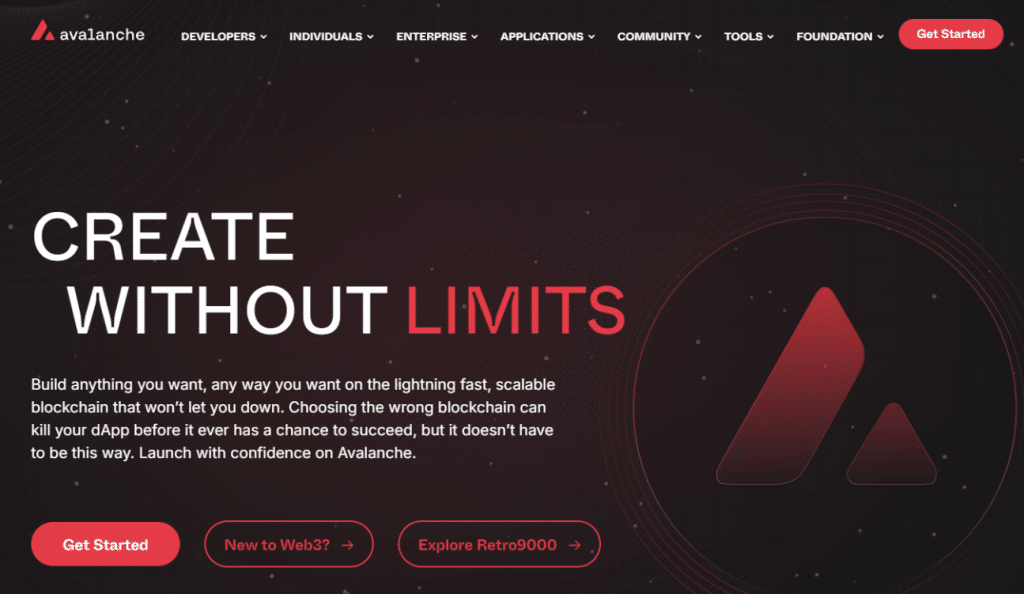
The network is incredibly fast, confirming transactions in less than a second. Big financial institutions like J.P. Morgan have started using Avalanche for their blockchain projects, which shows it’s not just fast but also trusted by traditional finance.
- Price: $20.79
- Market Cap: $8.7 billion
- TVL: $1.18 billion
8. Cardano (ADA)
Cardano is like the academic of the crypto world – everything it does is based on peer-reviewed research. While other blockchains might rush to add features, Cardano takes its time, making sure everything is thoroughly tested and proven.

This methodical approach has created a very stable and secure network. The community around Cardano is particularly passionate about the project’s focus on sustainability and its mission to bring financial services to developing countries.
- Price: $0.6986
- Market Cap: $25.2 billion
- TVL: $334 million
9. Berachain (BERA)
Berachain might be newer to the scene, but it’s making waves with its fresh approach to DeFi (decentralized finance). Think of it as a network specifically designed to make financial services more efficient and accessible.

Despite being relatively young, Berachain has attracted significant amounts of money into its ecosystem, showing that sometimes new ideas can quickly gain traction when they solve real problems.
- Price: $3.30
- Market Cap: $393.7 million
- TVL: $2.75 billion
10. The Open Network (TON)
TON has an interesting backstory – it was originally created by the founders of Telegram (the messaging app) but is now run by the community. The big advantage? It’s designed to work seamlessly with Telegram’s massive user base.
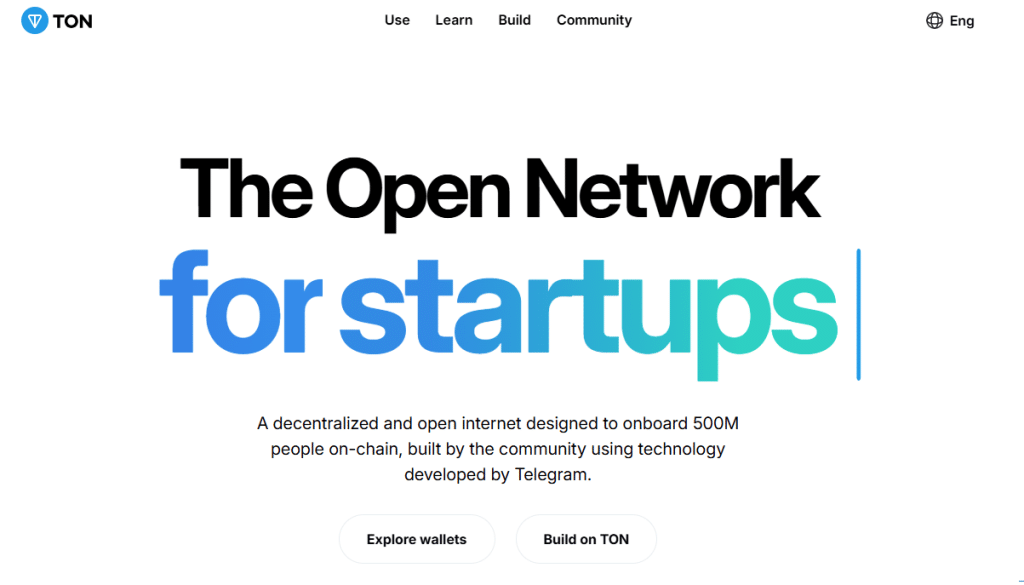
Imagine being able to send crypto as easily as sending a text message. Recently, Telegram announced it would share advertising revenue through TON, which could bring crypto payments to millions of everyday users.
- Price: $3.16
- Market Cap: $7.9 billion
- TVL: $133 million
Difference Between L1 and L2 Blockchains
Understanding the difference between Layer 1 and Layer 2 blockchains is like understanding the difference between a highway and an express lane. Layer 1 blockchains are the main highways – they’re the foundation that handles all the basic traffic. They’re secure and reliable, but sometimes they can get congested.
Layer 2 solutions are like express lanes built on top of these highways. They help process transactions faster and cheaper by handling some of the work off the main road, then reporting back to the main highway for final confirmation.
Here’s what sets them apart:
- Independence: Layer 1 blockchains are self-sufficient, while Layer 2 solutions need Layer 1 to function
- Where transactions happen: Layer 1 is where everything gets finalized, while Layer 2 handles the busy work
- Speed and cost: Layer 2 usually offers faster and cheaper transactions
- Security: Layer 1 provides its own security, while Layer 2 borrows security from Layer 1
Related Reads:
Conclusion: Ethereum and Bitcoin are the biggest L1 Crypto Tokens in the World
Layer 1 blockchains are the backbone of the entire cryptocurrency world. Each one brings something unique to the table – whether it’s Ethereum’s versatility, Bitcoin’s security, or Solana’s speed. As we continue through 2025, these networks are constantly evolving, finding new ways to solve problems and serve users better.
The competition between different Layer 1 blockchains is actually good news for everyone. It pushes innovation forward, leading to better technology, lower costs, and more options for users. As more people discover and use cryptocurrency, these foundational networks will continue to play a crucial role in shaping our digital future.
Whether you’re interested in finance, technology, or just curious about where the internet is heading, understanding Layer 1 blockchains gives you insight into the building blocks of tomorrow’s digital world. As this technology matures and becomes more user-friendly, we’re likely to see even more exciting developments that make crypto accessible to everyone.
